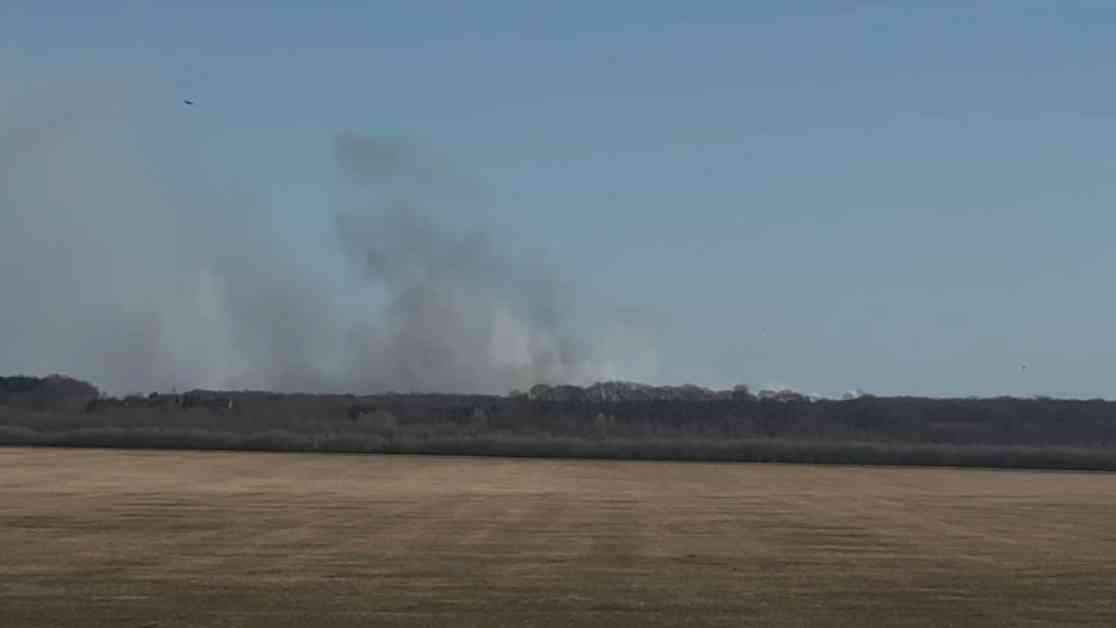The picturesque landscapes of Long Island’s Suffolk County were marred by a series of devastating brush fires that wreaked havoc on Saturday afternoon, sending massive plumes of smoke billowing into the sky. The fires were so intense that they were visible to residents from miles away, casting a dark shadow over the usually serene surroundings of the region.
As emergency services scrambled to contain the rapidly spreading fires, the National Weather Service shared radar images capturing the enormity of the smoke clouds, highlighting the scale of the unfolding disaster. The situation was exacerbated by the proximity of the fires to Sunrise Highway, a major thoroughfare that had to be partially closed for public safety.
Emergency Response Efforts
Local police were quick to respond to the escalating crisis, with reports of partial closures of Sunrise Highway to prevent motorists from entering the danger zone. The affected stretch of the highway, spanning from Exit 62 to 65, was shut down in both directions, causing significant traffic disruptions and inconveniences for travelers in the area.
Firefighters and emergency responders worked tirelessly to contain the flames and prevent further damage to the surrounding areas, as residents watched in disbelief at the unfolding events. The acrid smell of smoke filled the air, serving as a grim reminder of the destruction that the fires were wreaking on the natural landscape.
Expert Insights and Analysis
According to fire officials, the dry and windy conditions prevailing in the region had created a perfect storm for the outbreak of brush fires, with the flames spreading rapidly and engulfing vast swathes of land in their wake. The unpredictable nature of the fires posed a significant challenge to firefighters, who were forced to deploy all available resources to bring the situation under control.
In a statement to local media, Chief Fire Marshal David Smith underscored the gravity of the situation, emphasizing the need for caution and vigilance in the face of such natural disasters. He urged residents to heed evacuation orders and stay informed about the latest developments to ensure their safety and well-being.
The aftermath of the brush fires left a trail of devastation in their wake, with charred landscapes and smoldering debris serving as grim reminders of the destructive power of nature. As cleanup and recovery efforts got underway, the community rallied together to support those affected by the fires, offering assistance and solidarity in a time of need.
As the sun set over Long Island, casting an eerie glow over the scorched earth, residents reflected on the day’s events with a mix of sadness and resilience. The brush fires had left an indelible mark on the region, serving as a stark reminder of the fragility of life and the need to cherish and protect the natural world that sustains us.
In the days and weeks to come, the community would come together to rebuild and recover from the devastation, drawing strength from their shared experiences and the bonds that united them in the face of adversity. The brush fires may have caused visible smoke across Long Island, but they also ignited a spirit of resilience and compassion that would endure long after the last embers had faded.


